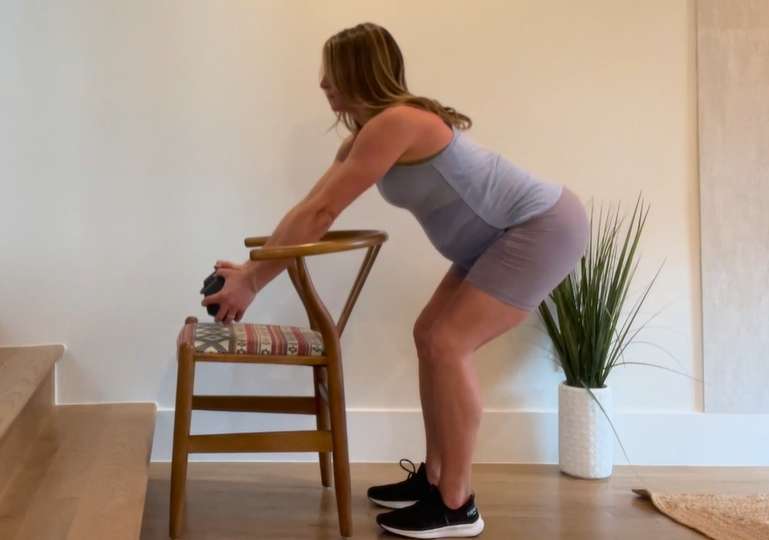Of all the prenatal exercise topics, core training seems to garner the most interest…and confusion. There are many myths and questions that persist, including whether or not it’s advisable to do any prenatal core training at all. We want to reassure you that it is not just safe, but incredibly beneficial, to train your core during pregnancy. In fact, we’d argue it’s the most important thing to focus on. Developing a strong, well-functioning core helps you mitigate pains and injuries, enables you to push more effectively, and even improves your overall health – and the health of your growing baby.
Of course, there are certainly core moves that need to be avoided or modified during pregnancy (hence the reason this topic can be so confusing). For help with what not to do, check out this post on core exercises to avoid during pregnancy.
In this post, we’ll discuss some of the best core moves to focus on to help you develop a strong, well-functioning core. We’ve specifically selected moves that you can do with little-to-no equipment.
Core Training: START HERE
Before we get into any specific exercises, there are two essential techniques you must master, as you’ll need to incorporate these into the exercises below (and most other movements, for that matter).
1. Get in “neutral alignment”
Neutral alignment means that you are standing or moving in a way that minimizes stress to your muscles, tendons, and ligaments. Unfortunately, the physical changes of pregnancy tend to pull the body OUT of neutral alignment, which is one of the key drivers of so many pregnancy pains and injuries. Watch the video below to learn how to find neutral alignment. You’ll first learn how to find it in a standing position, then you’ll learn how to maintain neutral alignment during movement. This is critical for the exercises that will follow.
2. Master the “#1 Most Effective Core Exercise”
Did you know that the way you breathe impacts every system in your body? Therefore, developing optimal breathing mechanics helps to reduce stress, increase energy, improve immunity, enhance digestion, mitigate pain, improve posture, and even create a healthier fetal growth environment. Truly, the way you breathe impacts your overall health. To help you learn how to breathe with optimal mechanics, watch the video below to learn 360° Breathing (a.k.a. the #1 most effective core exercise). In the first part of the video, you’ll learn how to perform 360° Breathing. Then, you’ll learn how to incorporate it into movement, which is essential for the exercises below.
5 Great Pregnancy Core Exercises
Because neutral alignment is so critical for minimizing any undo stress on the body — and because pregnancy tends to pull the body OUT of neutral alignment — core exercises that train the body to maintain neutral alignment are highly beneficial during pregnancy (and any other time for that matter). We call these movements “anti” core exercises because they attempt to pull your body out of neutral alignment — forward, backward, sideways, or into rotation — and your job is to resist that pull and maintain neutral alignment. Forcing your core muscles to work hard to resist being pulled out of neutral alignment makes them adapt and grow stronger (and therefore better able to resist being pulled out of alignment during pregnancy).
There are many types of anti-core exercises. We’ve selected 5 of our favorites below because they are a combination of practical, effective, and challenging in a variety of positions. All of these movements will attempt to pull your body out of neutral alignment, and you will need to work to resist that pull. Remember to incorporate your 360° Breathing as well.
NOTE: The 5 core exercises below are all different types of anti-core movements. However, when it comes to core exercises, we would be remiss if we did not discuss some of the most critical core muscles to focus on during pregnancy: your pelvic floor. Because pelvic floor work is so important during pregnancy, we’ve dedicated an entire post to that topic. Learn more about how to train your pelvic floor during pregnancy.
1. Single-Arm Low Carry
This movement attempts to pull your body sideways and you have to work to resist that pull. One of the reasons it’s so beneficial is because it is such a frequent daily activity. Whether you are carrying baby in one arm, a car seat, groceries, etc., there is almost always something attempting to pull your body to one side! You can use any heavy load here — a weight, heavy bag, laundry detergent, etc. — but the key is to maintain neutral alignment while walking.
2. Bridge with Shoulders Elevated
A big helper to the core is the glutes, and they get fired up in this bridge variation. Your hamstrings also get a lot of action, as they assist the glutes. So, it’s a win-win. You may notice that your low back wants to tuck under on the way down (creating a “C” shape with the spine). Make sure to reach the tailbone towards the chair as you lower to the ground, to preserve neutral alignment.
3. Quadruped Hover with Leg Reach
While plank holds have a place in your prenatal program, they can sometimes become too taxing later in pregnancy when the belly is larger. This exercise works the core effectively while moving you into and out of a plank. You may notice that your hips want to sink downward toward the ground, or lift up high, as you step into the plank. Work hard to preserve that neutral alignment, maintaining a straight line between ear-shoulder-hip-knee-ankle.
4. Crib Reach
While this move may seem like its more for the arms and legs, the glue holding your limbs together is your core. Therefore, this move is a terrific test of your core strength in a very common task you will likely be doing dozens of times a day. When reaching the load over the barrier, you might be tempted to round your spine. Be sure to initiate the movement by reaching your tailbone toward the wall behind you and try to maintain a straight line between ear-shoulder-hip. TIP: This is a great movement to practice for anyone who will be picking baby up out of crib.
5. Dead Bug
This is a highly beneficial exercise. Just like mentioned in the previous description, moving your arms and legs together — while working to keep your trunk in neutral alignment — is great training for your core. Your lower back may want to lift off the ground but try to resist this shift to maintain neutral alignment. Because this exercise involves lying flat on your back, it’s optimal during first and second trimesters. While it’s fine to be on your back for a short time throughout pregnancy, this exercise may become a little uncomfortable during the third trimester.
How to Know When A Move is Too Much
When doing these, or any other exercise, use the signs below to help you determine if a movement is too much for your body. If you notice either of these, it’s a sign to stop the movement and take it down a notch.
1. Coning in your belly: If you see a vertical, torpedo-like protrusion down the center of your abdomen, this is a sign that the movement you are doing exceeds the capacity of your core muscles. So, stop or swap with an easier move until you no longer see coning.

2. Loss of neutral alignment: If you notice you lose the straight line connection between your ears-shoulders-hips (as explained in the video above), this is also a sign to reduce the challenge until you feel you can control your positioning.
Want Additional Resources?
For additional resources to help you exercise safely and effectively during pregnancy, explore our training programs and services. You’ll find a variety of offerings tailored to different needs — from education, to self-guided training programs, to the ability to work with an expert coach.
Or, if you’re a health & fitness pro interested in coaching pre & postnatal clients, check out our ProNatal Education & Certification.
